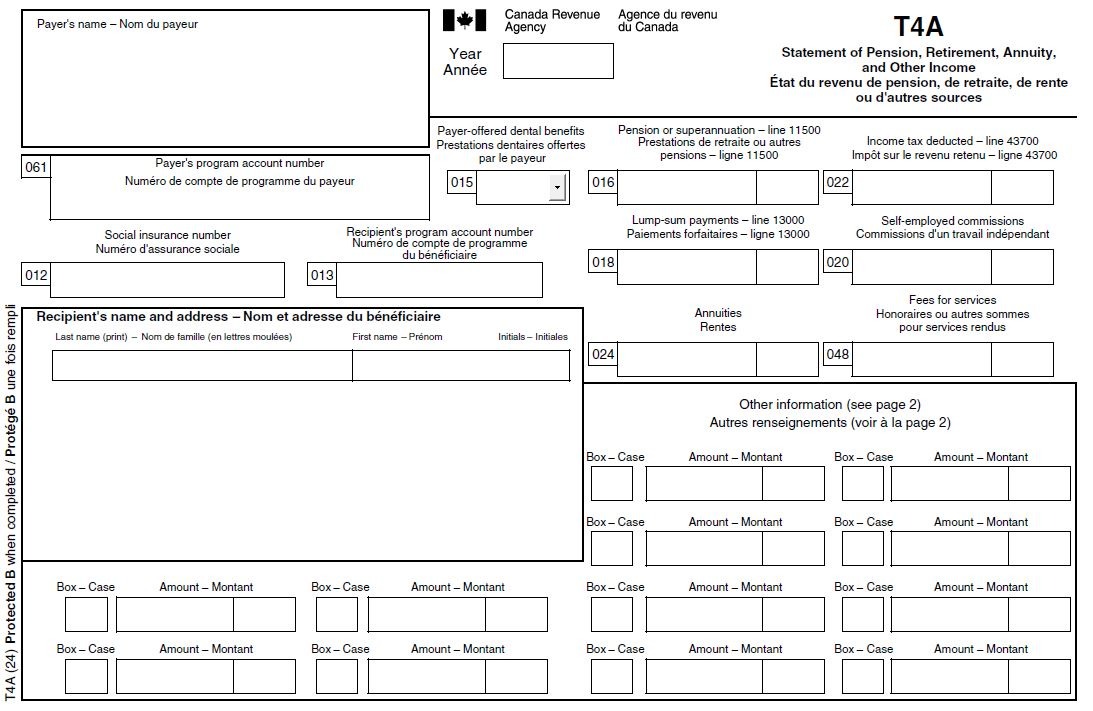

Payroll year-end isn’t only about your employees. If your business paid contractors, consultants, or anyone outside payroll, you may also need to issue a T4A slip.
The T4A, formally called the Statement of Pension, Retirement, Annuity, and Other Income, reports how much your business paid in non-employment income. These are things like contractor fees, self-employed commissions, or research grants.
Both the recipient and the Canada Revenue Agency (CRA) use the T4A to confirm taxable income. Your contractors will use it to file their taxes, and the CRA will use it to make sure your business has accurately reported what it paid out.
Here’s what small business owners need to know about this slip with a confusing name and clear responsibilities.
A T4A slip reports payments your business made to individuals who aren’t on your payroll. These are typically independent contractors, consultants, or service providers.

You’re required to issue a T4A if you paid $500 or more in non-employment income in a calendar year. Common examples include:
Basically, if someone sent you an invoice and you paid them for their services, a T4A may apply.
Each T4A slip records the amount paid and how that income is categorized. Depending on the type of payment, you’ll complete the appropriate box on the form.
Some common boxes small business owners see include:
You’ll also include the recipient’s information (name, address, and Social Insurance Number or Business Number) and your business details.
The CRA provides fillable and downloadable T4A forms you can use, but most payroll software, including Huumans, can generate them automatically.
T4A slips are due by the last business day of February following the calendar year. For example, T4As for 2025 payments must be filed and distributed by February 27, 2026.
They’re considered on time if they’re received or postmarked on or before that date. If February’s last day falls on a weekend or public holiday, the due date moves to the next business day.
The CRA charges late-filing penalties that multiply daily based on the number of slips and how many days they’re overdue. For example, even a few days’ delay can trigger fines that add up quickly if you issue several T4As.
In addition to penalties, delayed T4As can frustrate contractors waiting to file their taxes, reflecting poorly on your professionalism.
Using payroll software that automatically tracks payments and reminds you of deadlines helps keep things on schedule and error-free.
Both your service providers and the CRA get copies of the T4 slips — but for different reasons.
Note: If you paid contractors in Québec, you may also need to issue an RL-1 slip for Revenu Québec.
Tip #1: Use payroll software that generates T4As automatically. Otherwise, follow these key dos and don’ts when you’re filling out contractor T4As.
Pro Tip: Payroll software, like Huumans, also creates your T4As, T4A Summary and files them directly with the CRA — no extra paperwork or data entry required.
Keep your payroll accurate from day one. Whether you’re paying employees or contractors, automating your records saves time and reduces the risk of errors.
We built Huumans Payroll to make compliance simple, fast, and reliable for small business owners. To make it even easier, you can pay up to 5 employees or contractors for free for the first year.
For more information on T4A, check out these helpful links.
Any contractor, freelancer, or non-employee who earned $500 or more for services in the year.
No. Employees receive a T4 slip. T4As are only for non-employment income.
First, T4As are for contractors, while T4s are for employees. Second, there are no payroll deductions on T4As because contractors manage their own taxes.
By the last business day of February following the calendar year.
Both the service provider and the CRA receive copies. Providers use their T4As to file their taxes, while the CRA uses them to verify your payroll reporting.
Fine print changes all the time. We do our best to keep things accurate and helpful, but this blog doesn’t replace your accountant, bookkeeper, or lawyer.
If you catch something off, let us know and we’ll fix it. And if we link to other sites, that’s just us sharing resources — what they say is on them, not us.